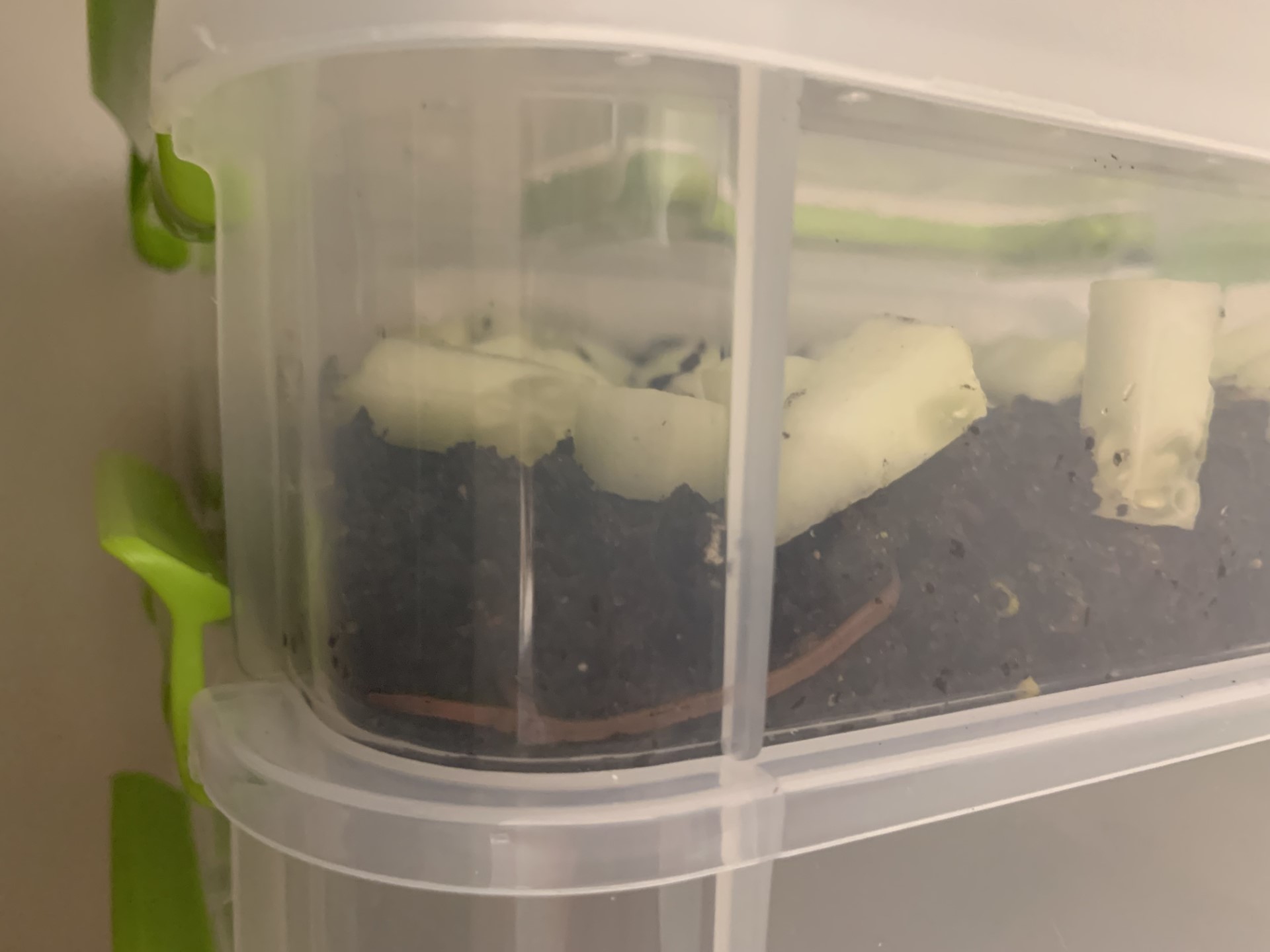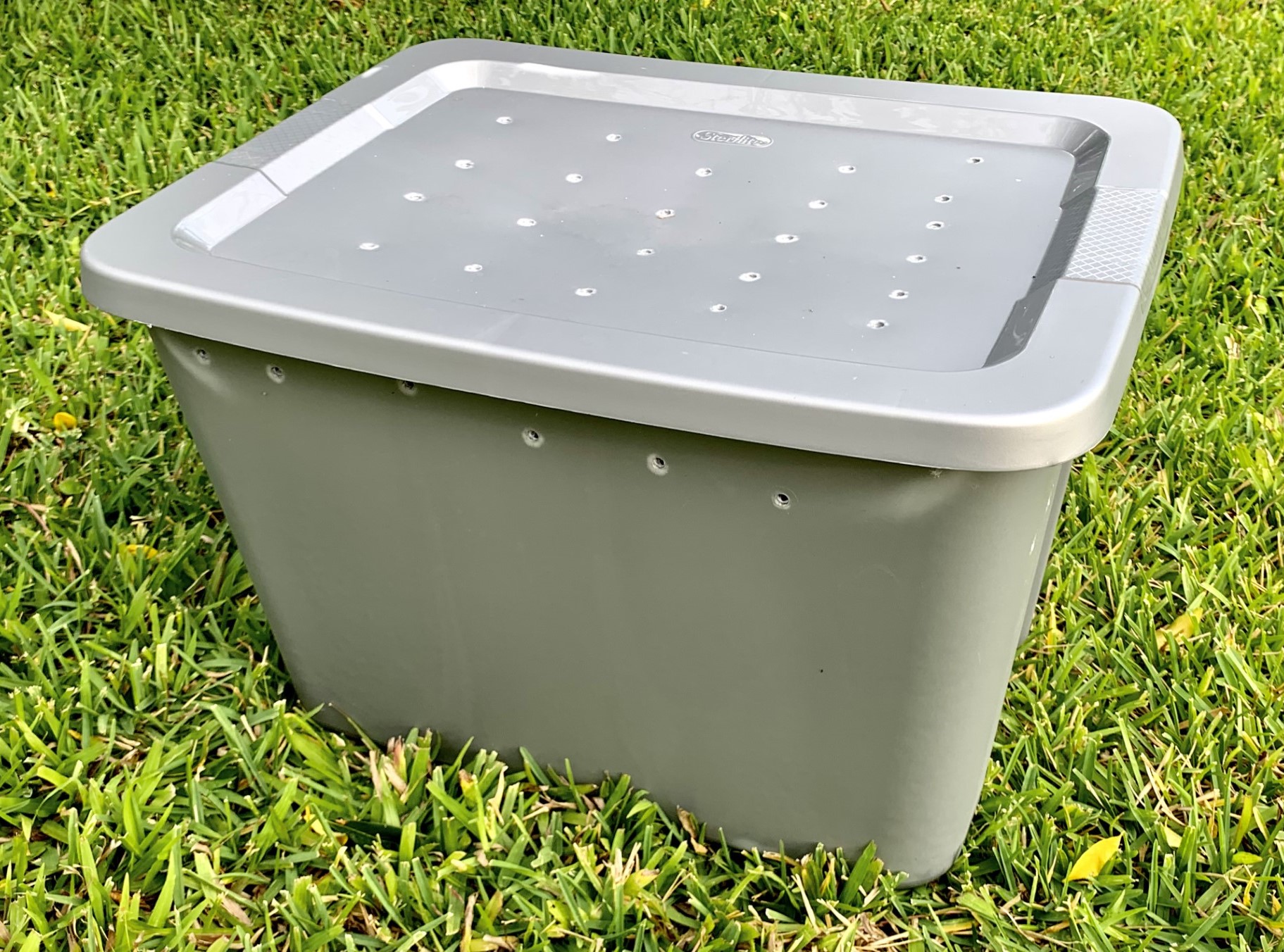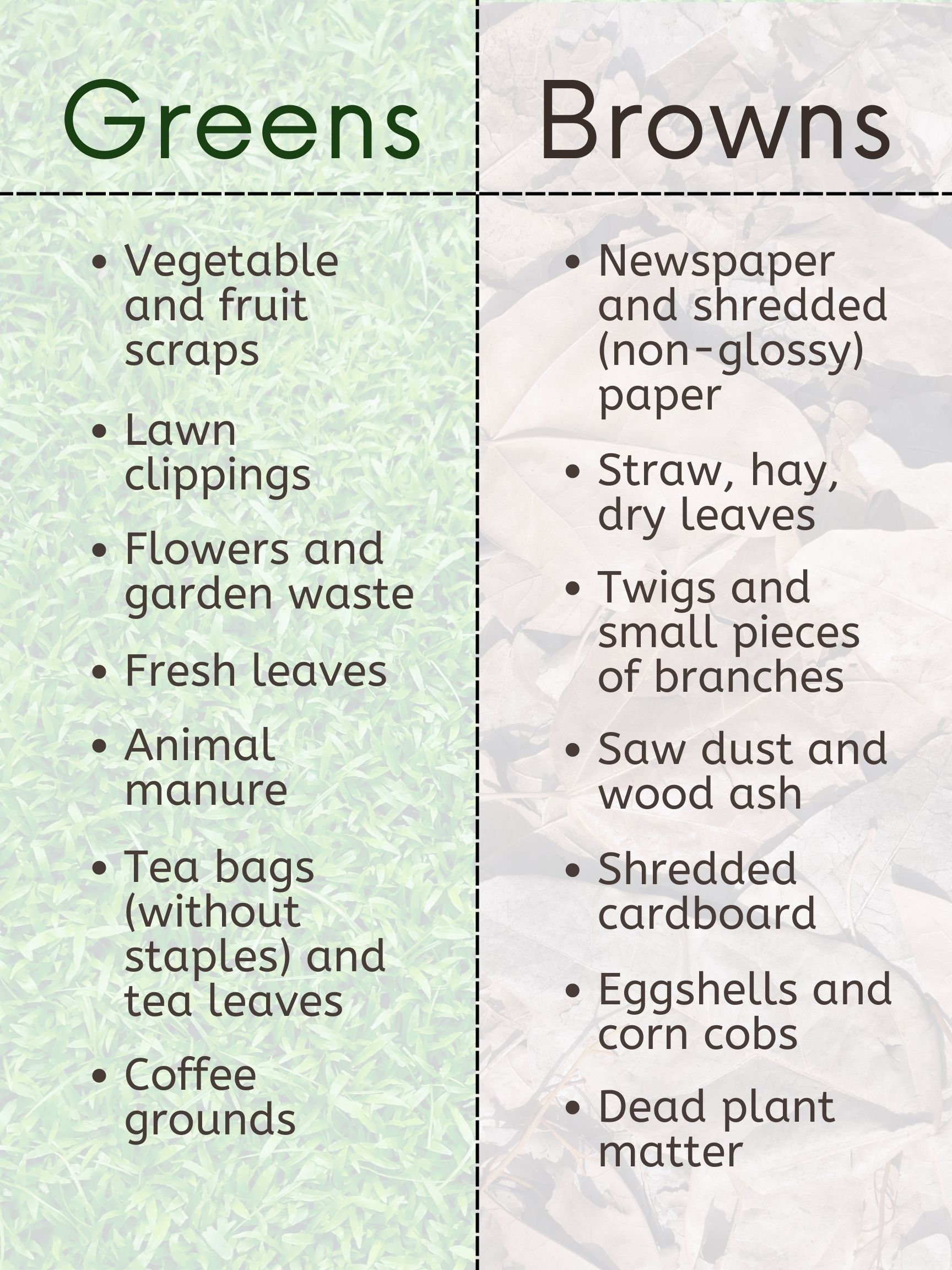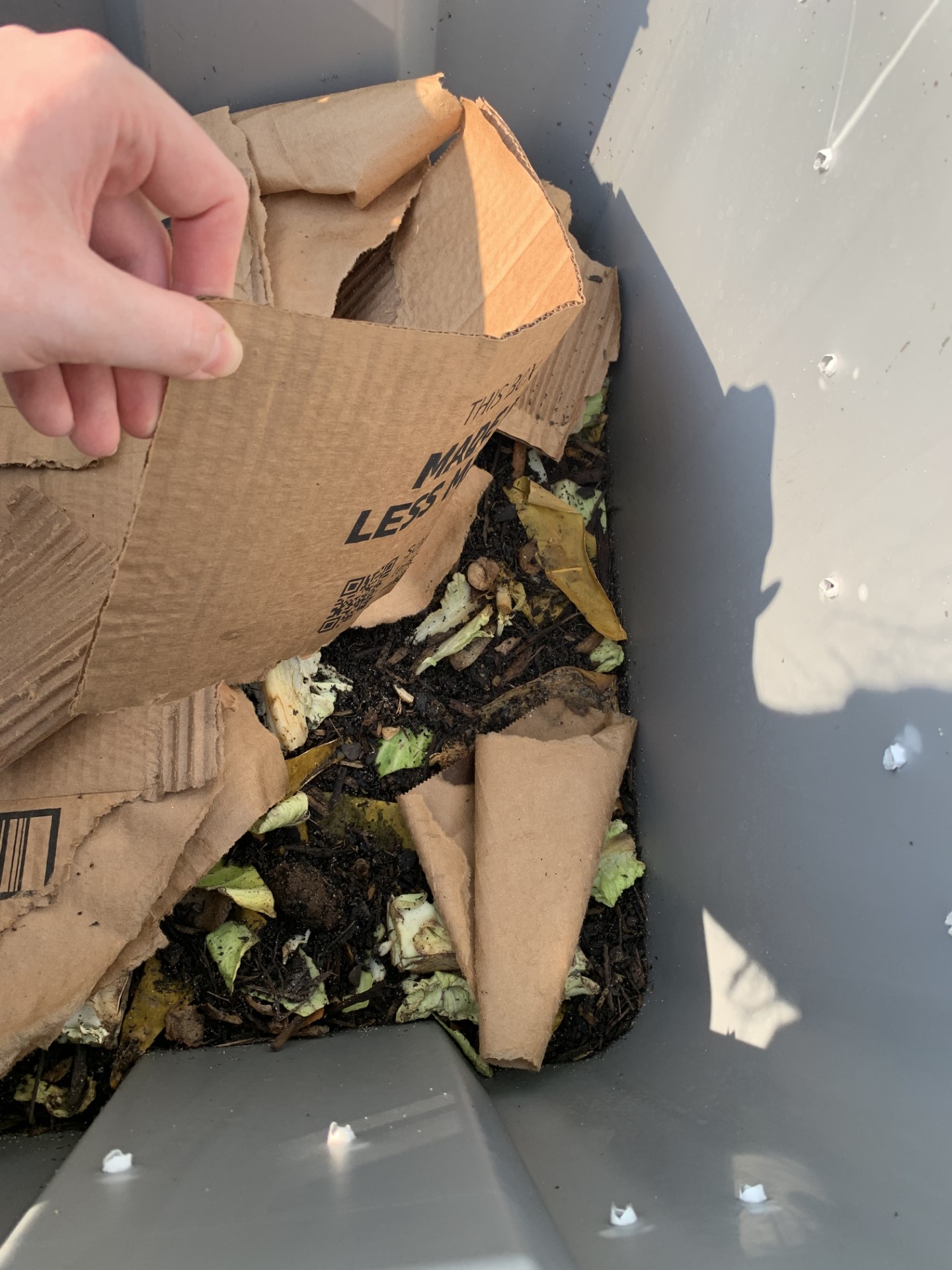LIBRARY BLOG
How to Make Your Own Worm Compost Bin
Before we get into creating a worm bin, here’s a quick run-down on worm composting:
The nutrients from broken down organic materials serve as excellent fertilzer for your gardens, and you can get them through composting. Worm composting uses worms to till and move around the contents of a compost bin instead of someone doing the mixing by hand. By eating and excreting your food scraps, they create something referred to as “black gold,” or compost. It’s an eco-friendly way to mitigate food waste and recycle certain materials at the same time as fertilizing your peonies. You can read more about composting and what worm composting entails here!
House Hunting—Worm Style
The bin you use is as important as what you fill it with. You can buy an outdoor worm composting bin, but those can be pricey. Indoor worm composting bins are also harder to find commercially, unless you want a big outdoor bin taking up space in your dining room. Either can be made cheaply if you’re willing to modify some common household storage boxes, though.
Making a worm bin isn’t complicated. My first indoor worm composting bin was a 10x7x7 3-tier storage container that I drilled airholes and drain holes in. To do something similar, make holes in the lid of the box so the worms can breathe. Then drill holes in the bottom of the top box and any middle boxes for drainage. For a 3-tier container, that would be just the first and second boxes. Leave the bottom box intact. Then, drill airholes around the sides of any middle boxes towards the top. The idea of this is to have worms in the first and middle boxes and leave the bottom box to catch any excess water from drainage.

A close up of my original, small bin. Notice the airholes in the lid of the box.

I now have a bigger outdoor operation made from an 18-gallon storage tote—like the kind you keep holiday decorations in. Like with the smaller container, I drilled lots of air holes along the top and around the sides. I made a few holes in the bottom to promote drainage, but not enough to encourage escapee worms. If you use this type of box for indoor use, put it inside another bin with no holes so that drained water doesn’t get on your floors. Periodically dump out the excess water from the outer bin. Outdoor boxes shouldn’t be kept in direct sunlight, expecially in the South Louisiana heat. Put them in a shadier spot so they don’t bake in the box. If you decide to use this type of box for outside, the color is important. Worms are paralyzed by too much sunlight, so use an opaque color instead of a clear one. Try to use a lighter colored box, especially if you don’t have a shady spot in your yard to place it.
Interior Design—Worm Style
The starting mixture you put down in your worm bin is called bedding. Bedding can be made from a variety of household materials mixed together, including soil, ink-free cardboard, non-glossy papers, preexisting compost, and other compostable material. Compostable materials are typically categorized as “browns” and “greens.” While the brown and green materials typically match their category color namesakes, sometimes it doesn’t. Think of it more as wet and dry material when classing it. Green material, like lawn clippings, food scraps, and manure have a moisture component. Brown material like papers and dead plant matter are dry. Make your bedding out of a mix of brown and green material.
Break down cardboard into its layers if possible, then shred it. Likewise, paper documents like junk letters and old newspapers can be torn up and placed in as well. Make sure you’re not throwing in those plastic-y, glossy pamphlets and leaflets that companies and campaigners mail out, as these won’t biodegrade nicely for your worms. When adding non-soil-like components, remember to leave enough room for the worms to roam around. Otherwise, you’ll have defeated the purpose of using worms to compost. Once you feel you have a good mix, add enough water for the mixture to be damp.

Worms, free range or store-bought, are likely coming from an environment of already microbial-rich dirt, and if not, they were probably on a quest to find it. There’s a reason why you might find worms in some parts of your backyard and not others, and it’s because soil composition can vary, even when separated by just a few feet. When putting soil in your compost bin, make sure it’s the same soil you find worms in, ensuring it’s the type that worms already like.
When you introduce worms to a composting bin, it’s ideal to make sure the soil is hospitable enough to make them want to stay. Otherwise, there might be a mass exodus, and you’ll lose most or all of your worms overnight. To get an ideal soil composition, put the bin together a few days before you introduce your worms so it has time to gather some worm-life-sustaining microbes. If you have livestock manure, adding some in can help speed this process along. I used Black Kow brand’s composted cow manure in my bin. (Don’t worry, this kind of manure has no odor). If that gives you the heebie jeebies, you can also just mix your materials together and add some compostable food scraps to let those microbes grow on their own. (However, if animal manure does gross you out a little, it is good to know that worm compost is effectively worm waste. Just something to keep in mind.) It’s also not cheating to make a bit of your bedding preexisting compost (again, like the Black Kow compost mentioned earlier). People or other worms worked hard to make that compost, so you might as well use it for more than just gardening.
Maintaining Feng Shui—Worm Style

If humans attest to the principles of feng shui for their houses, then worms have their own version. The balance of your bin might take a while to get down, but worms generally do better in an environment that’s not too wet or too dry. Finding the right balance for your particular worms will take a little trial and error.
Think about compostable material as wet and dry pieces like before. Things like food scraps and lawn clippings add moisture to your bin. In order to not have a soupy bin, mix enough dry materials like paper scraps and cardboard bits to level it out into a damp pile.
Bedding also doubles as something to cover food scraps with to minimize odors and deter pests. Covering your scraps with the compost or other pieces of bedding material will protect the bin from bugs like mites and fruit flies, but also (if the bin is outside) from vermin looking for a meal, making it good for your worms, your nose, and the general state of your yard. If you use cardboard pieces to cover food scraps, wet the top slightly to help the cardboard start to break down.
Sources/Further Reading
How to Make a Worm Composter | Natural History Museum
Vermicomposting: Composting With Worms | CalRecycle
Indoor Composting With a Worm Bin | NYC Compost Project (pdf)
A worm farming/composting expert:
Documentaries, Movies, and Videos
-Lillian LeCompte, Reference Department
